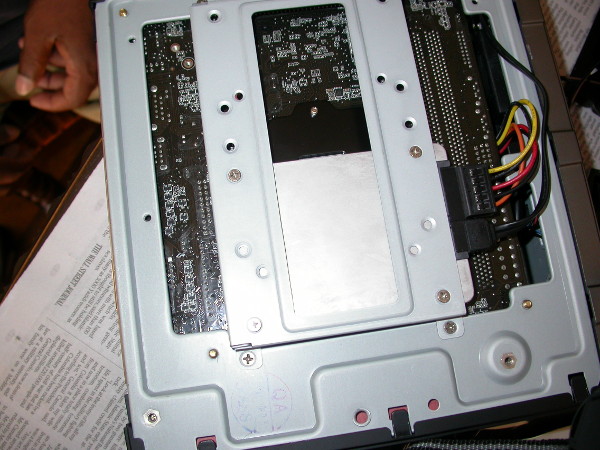Building a replacement mini-ITX server for home use
November 29, 2015
IT was the leader of the OpenBSD project, Theo de Raadt, who told me about what made a server go: a power supply that would last for four years and run 24/7.

Having had to replace the power supply on my existing server once, I thought it would be a good idea to put a new one online after five years.
In the end, it took much longer. I built the server in April 2015, a little more than five years after I put the last one online, but for one reason or another, putting it online was delayed.
Getting the bits and pieces together for a mini-ITX server is not the easiest of jobs, given that there are limited choices when one is residing in Melbourne, Most of the hardware is available only in Sydney.
However, unlike the last time, I decided to buy most of the parts locally, and only got a case from Sydney. The Antec ISK110 VESA case came with a 90-watt adaptor and this was the main reason I bought it; these days, you can't get anything less than a 430-watt power supply if you are using the standard PSU.
The other parts were sourced locally: MSY had few mini-ITX boards and from among them I chose the ASUS H971-PLUS. I note that they have now stopped selling mini-ITX boards altogether.
I bought an i3 Intel processor and 4 GB memory kit. Overkill, yes. The final piece I needed was an USB network card as I could not use the lone PCI slot on the motherboard for a standard card; the case had no outlet for this PCI slot.
Building the server did not pose many problems; I had the assistance of my guru Arjuna Fernando whose fingers (below) are much more nimble than mine when it comes to shoving cables into small spaces. The server can take a single SATA disk or an SSD; once again, it is tight in terms of space, but everything fits so wonderfully well.
I had a 120GB Intel SSD which I had bought some time back and used that in the server initially, with the idea of using the back-up DVDs from my existing server, made using mondo and mindi, to install the operating system.
But this did not work out. After many tries I discovered that the USB DVD-Writer I was using was not working properly. My problems did not end there; even a new one did not work properly. For some reason, it would not boot off these back-up DVDs.

My UNIX guru Peter Giorgilli suggested that if the new server had a hard drive the same size as the old one, then the dd utility could be used to transfer the operating system over. So I bought a 500GB SATA notebook drive, the same as I have in the server that was being replaced.
It took until the beginning of November before Peter and I could sit down and attempt to use dd to transfer the operating system over. But when it did go ahead, it worked out pretty much as expected.
There were a few more hiccups in putting it online as this kind of copying does need a bit of tidying up. With that done, the server was finally put online on November 29.
Given the time interval between copying the operating system over to the new server and the date of putting it online, the changes on the old server were transferred to the new one across using rsync, a wonderful utility, the handiwork of the Australian developer Andrew Tridgell.
The final hurdle was the USB network card I had bought; my server is still running the old version of Debian (Wheezy) even though the next version (Jessie) was released around April. Wheezy had no drivers for my D-Link USB network card.

Fortunately, I had an ancient USB network card lying around; its age can be gauged from the fact that it is a 10/100 card. But this is fine, given that it is just for a home server.
The server has no moving parts apart from the processor fan and is thus largely silent. So far, it has been running as I expected: silently and efficiently.
The case is ideal, if a little on the small side, but the form factor was what influenced me to buy it. Other cases at the same online seller are more decorative and bigger and, more importantly, have much bigger power supplies. The one I bought was the only one with its own PSU. From one point of view, it is better to stick with standard parts, but hopefully the power supply will last until I need a replacement server again.
Contact me (remove the nospam before emailing).
previous back to home page